Portugal has long been at the top of my list of countries to see, and last summer, I finally made it there. I was over halfway through my one-month journey around Southern Europe when I stood by the marina in Ayamonte, Spain, and looked over the Guadiana River to Portugal on the other side. But I didn’t cross over that day. Instead, I caught a bus from Huelva the next day to Lisbon, Portugal’s capital, which would be my base for my (way too short) three-day visit in the country.
Lisbon is a city I’d never really heard or read much about, but the amounts of tourists and its touristic value tells me it is up-and-coming as the next big city destination in Europe. As the second-oldest capital in Europe (after Athens), it has a lot to offer.
With just three days in Portugal, I had to make the most of it. I chose to spend two of them on day trips to Sintra and Évora, and my first day would be dedicated entirely to Lisbon. A day is never enough to do anywhere justice, but it is always better than nothing!
A flea market from heaven
That day was a Saturday. And what a great choice that turned out to be! Because after reading about the flea market, Feira da Ladra, I really wanted to experience it, and it’s only held on Tuesdays and Saturdays! And it turned out to be even better than I’d imagined.
Hundreds of stalls full of artisan goods, clothes, books and antiques line the streets around the Campo de Santa Clara square. You can get everything there – from broken junk to the purest gold in the form of unique handmade goods and one-off vintage clothes. There’s little I love more than a good flea market and this one is extraordinary. And it only adds to its charm that it is the oldest of its kind in Lisbon, and is said to have been held since the 12th century!
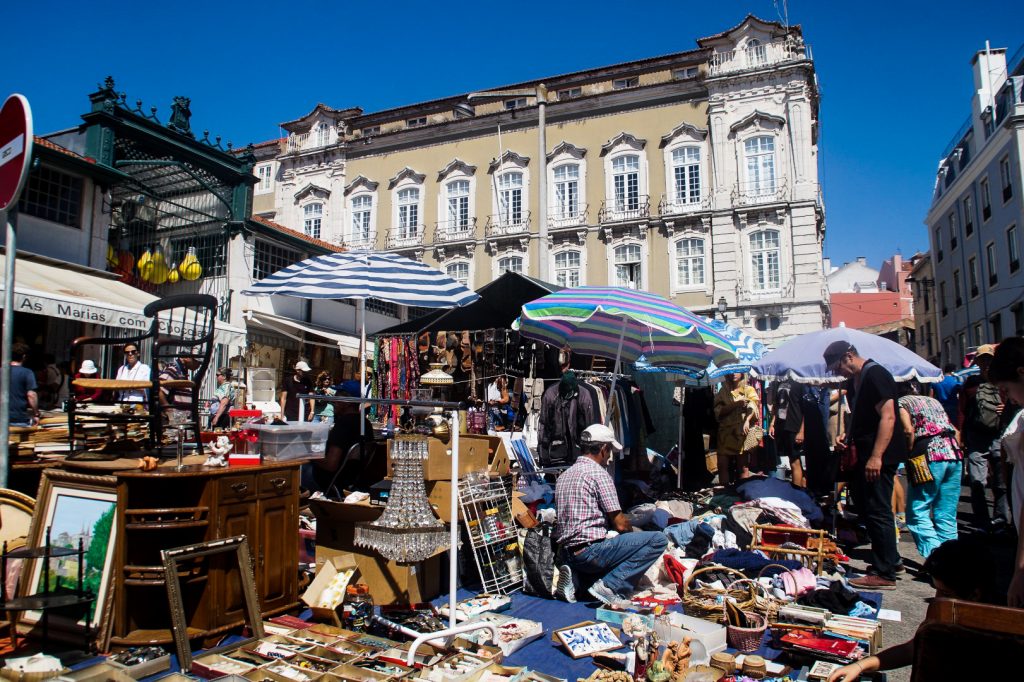
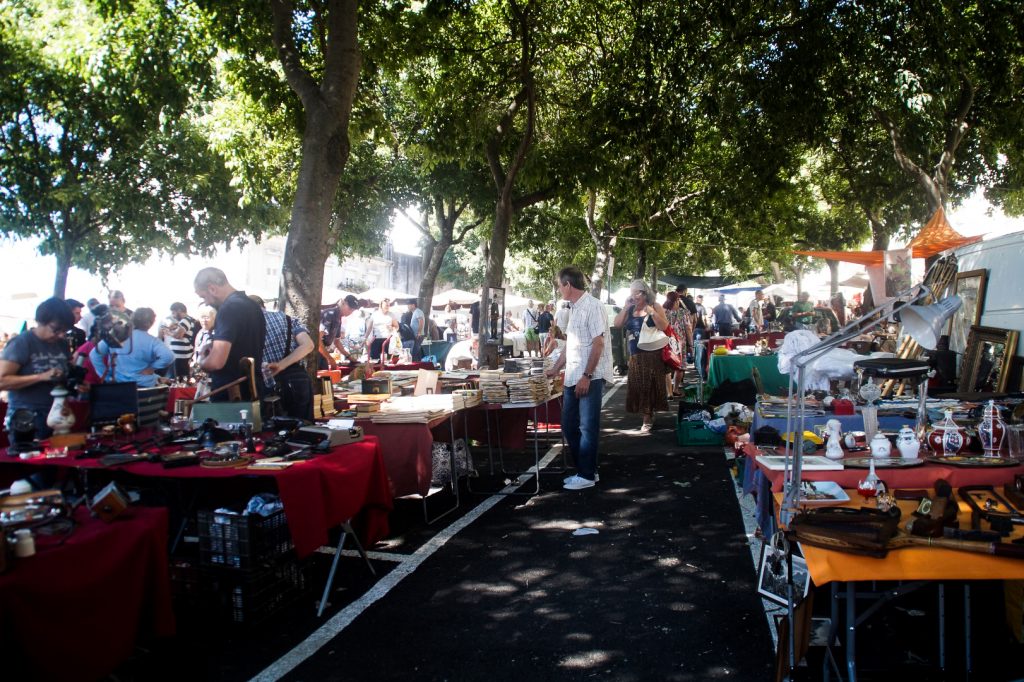

Strolling through the historic Alfama District
The flea market is located in the heart of the historic Alfama District, the only area of Lisbon that wasn’t affected by the earthquake and tsunami of 1755 that left over 90 % of the buildings in the city destroyed. This means that Alfama stands out as a historic oasis amidst the more modern neighbourhoods of Lisbon.
Historically, the district was poor and run-down, but today, it has turned into a desirable district for artisans and a true tourist hotspot. It is a labyrinth of cobbled streets and alleyways, complete with panoramic viewpoints around almost every corner. I enjoyed just getting lost in the maze of narrow streets, surrounded by ancient pastel-coloured buildings and dotted with cute plazas and cozy cafés.
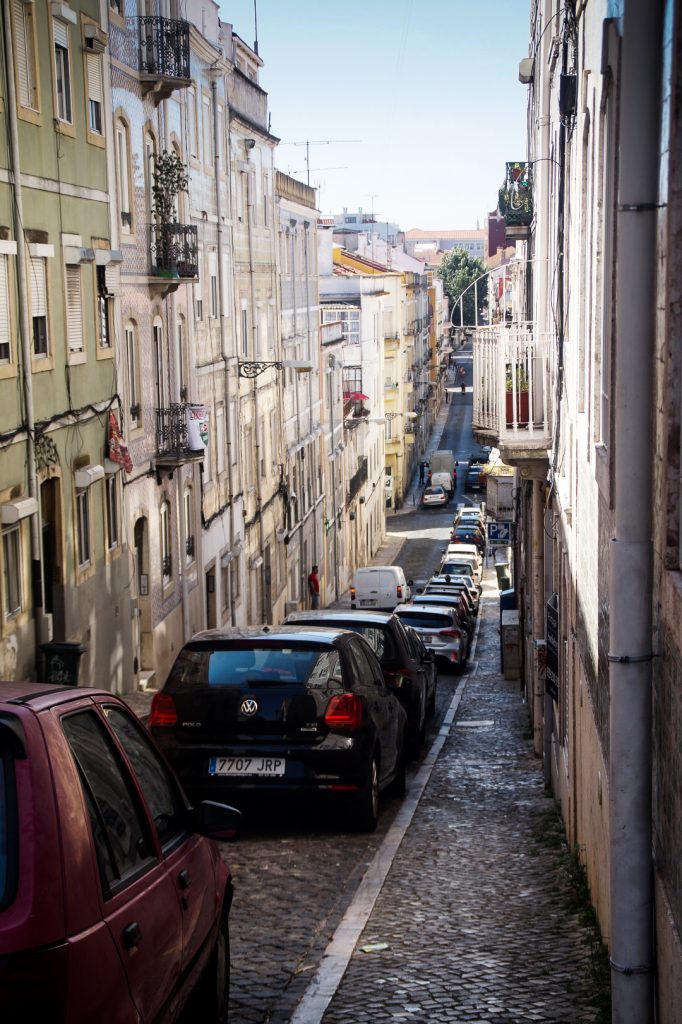
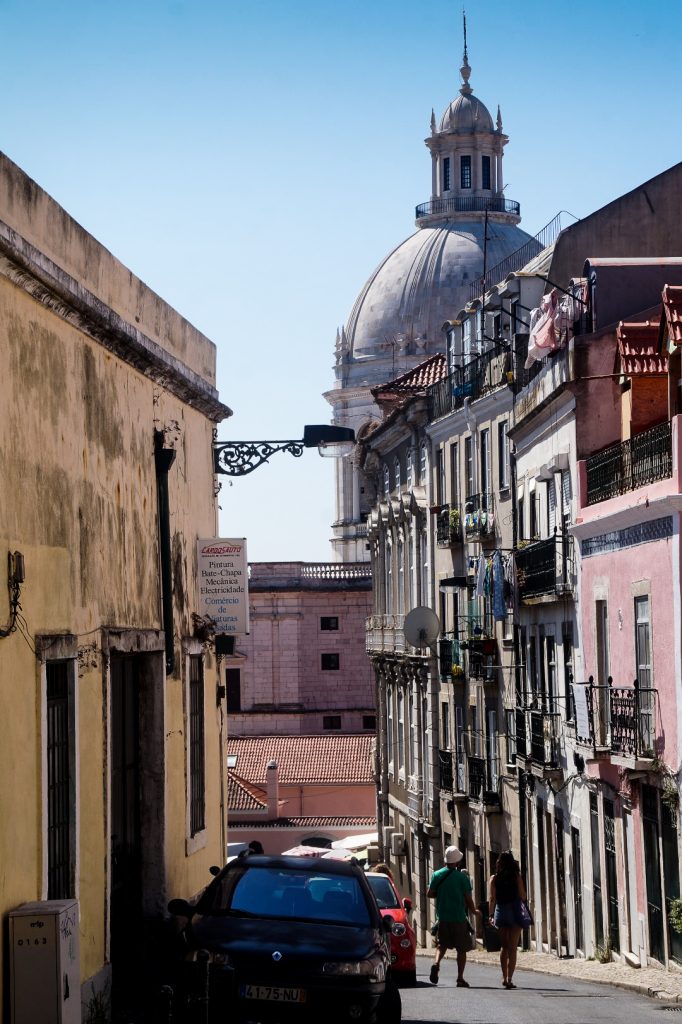
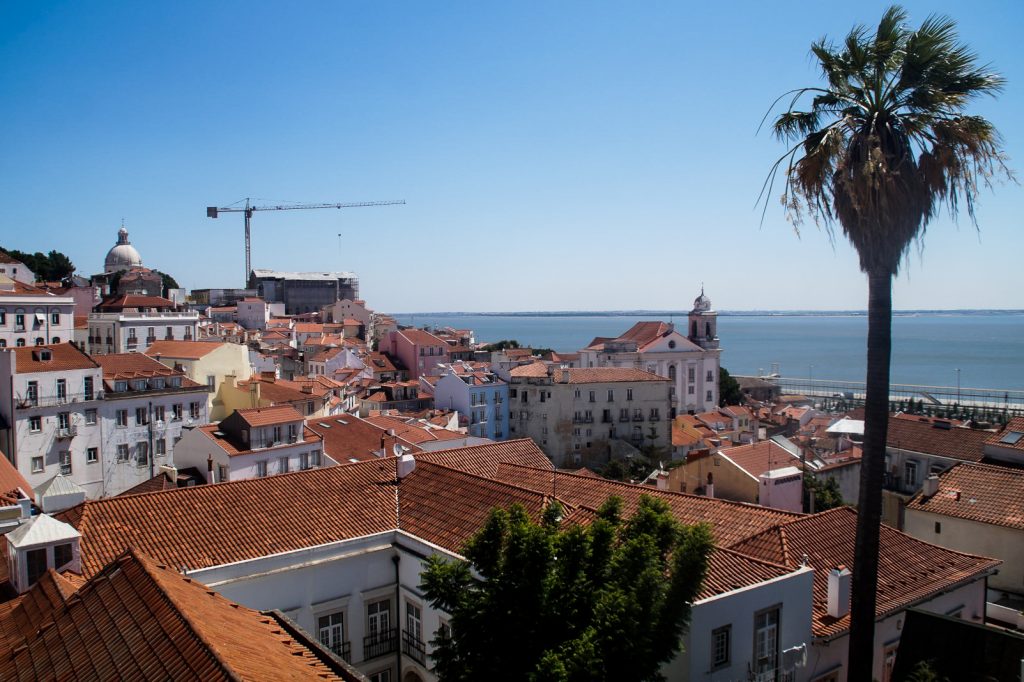

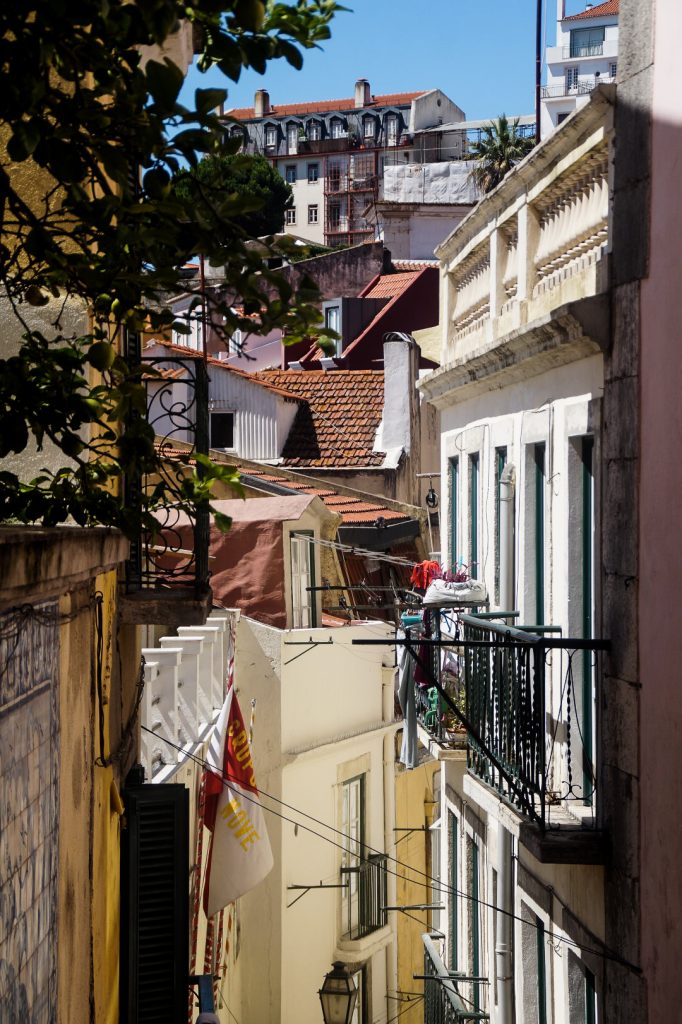
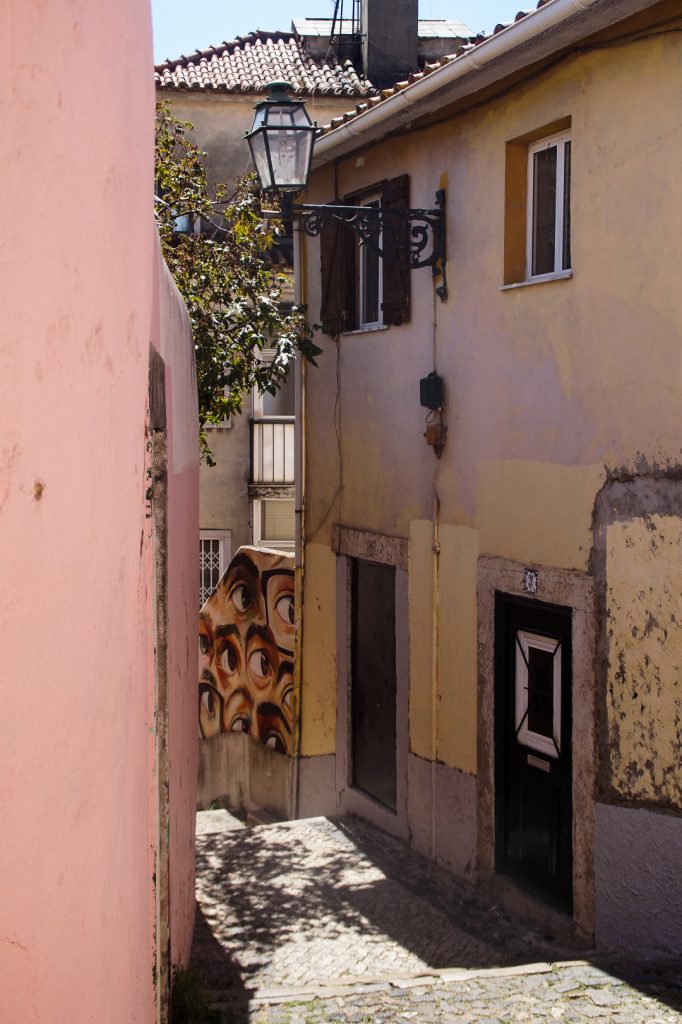
Panoramas from Castelo de São Gorge
High above the Alfama District sits the historic castle, Castelo de São Gorge. The castle hill has been occupied since the 8th century BC, and the first fortifications on the site date from the 1st century BC. Since then, the hill has been the location of fortifications occupied by Phoenicians, Carthaginians, Romans and Moors before its conquest by the Portuguese in the Siege of Lisbon in 1147. The fortress has since served as a royal palace, military barracks and a national archive. Today, the site is a national monument and a museum, and a very popular tourist destination.
I spent a good while exploring the historic fortress and its museum, and chasing peacocks around the courtyard. But the most impressive thing about the fortress is the incredible views of Lisbon from all possible angles. The pastel-coloured city shone in the hot sun, and the soft blue water of the Tagus river beyond it invited me to come closer.




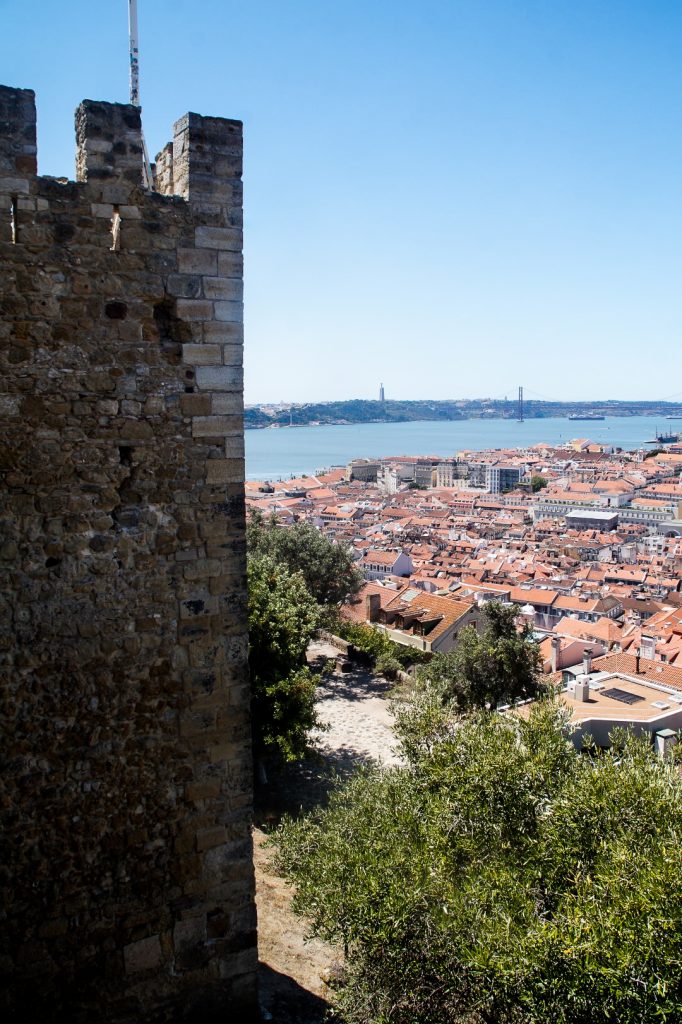
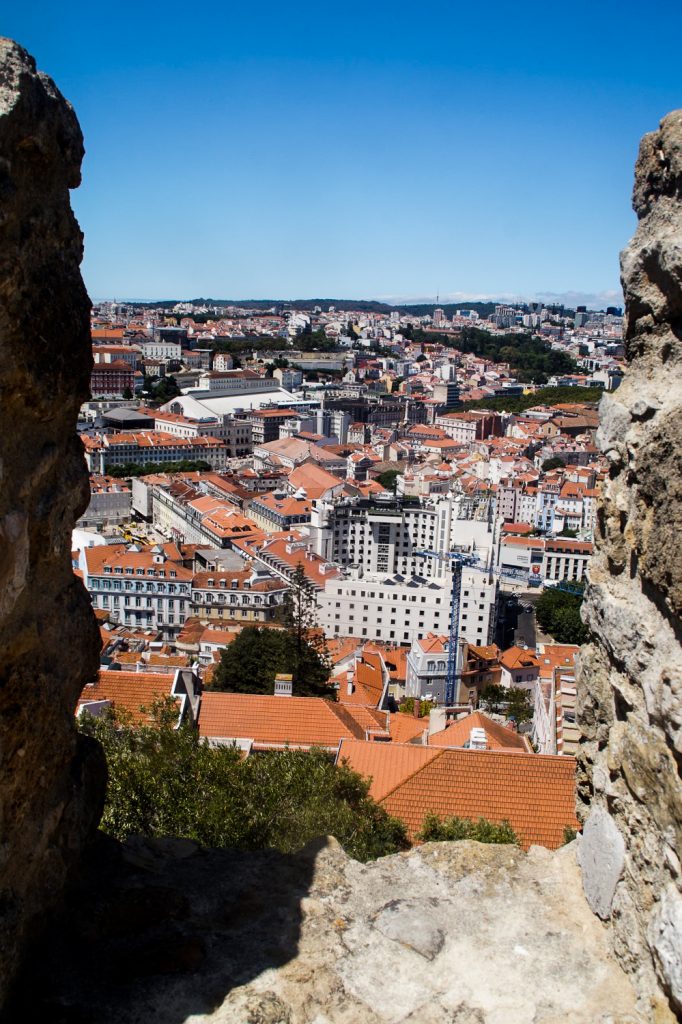
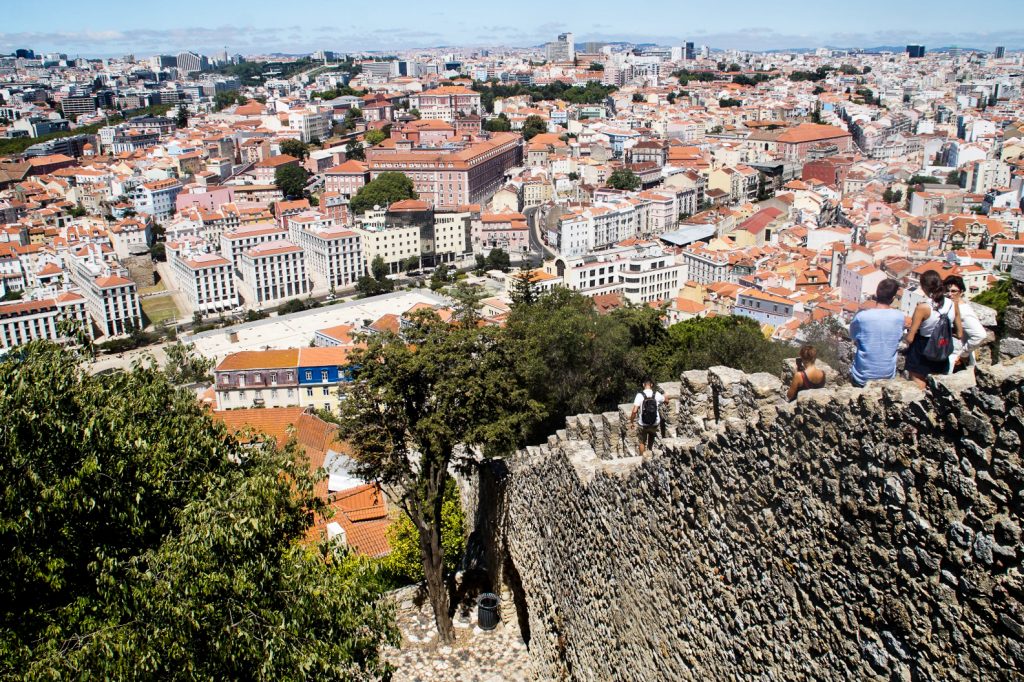
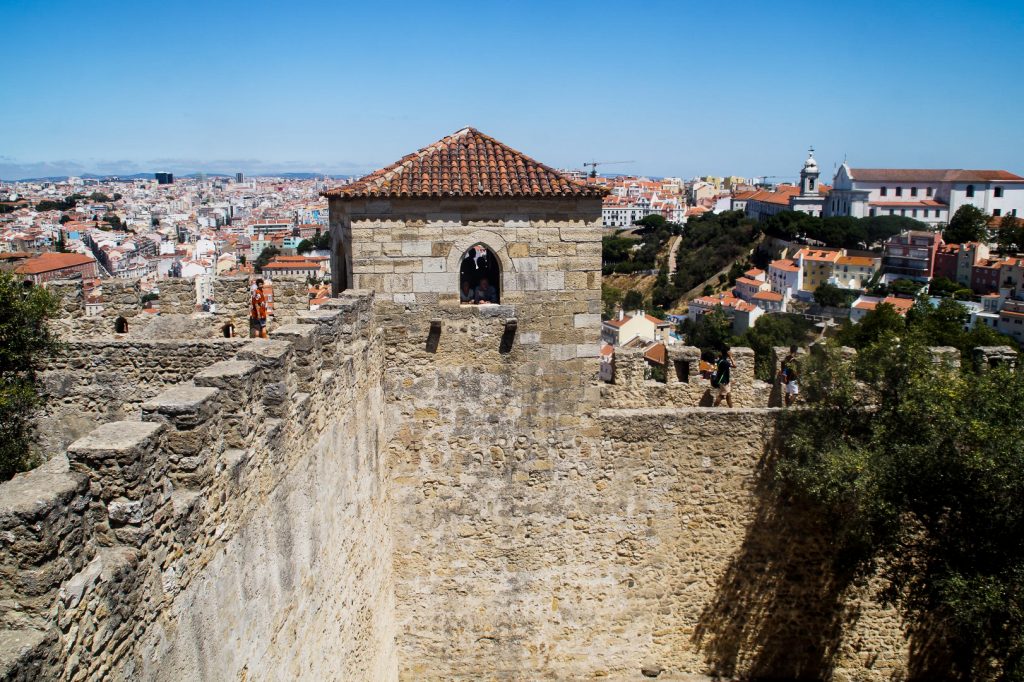
The Praça de Dom Pedro IV and Praça do Comércio squares
I was lured in by the bright blue and the thought of a fresh breeze from the wide river, so I tried to find my way down to the shore. But Lisbon kept delivering, and I kept having to stop to take it all in. I somehow ended up at Praça de Dom Pedro IV, which has been one of Lisbon’s main squares since the Medieval times, and soon after found myself at the enormous Praça do Comércio square by the river.
But a toilet break called before going down to the river, and it led to the discovery of the fanciest toilet I’ve ever seen, complete with a wall full of toilet paper in every colour of the rainbow! Lisbon, you truly are a breath of fresh air!
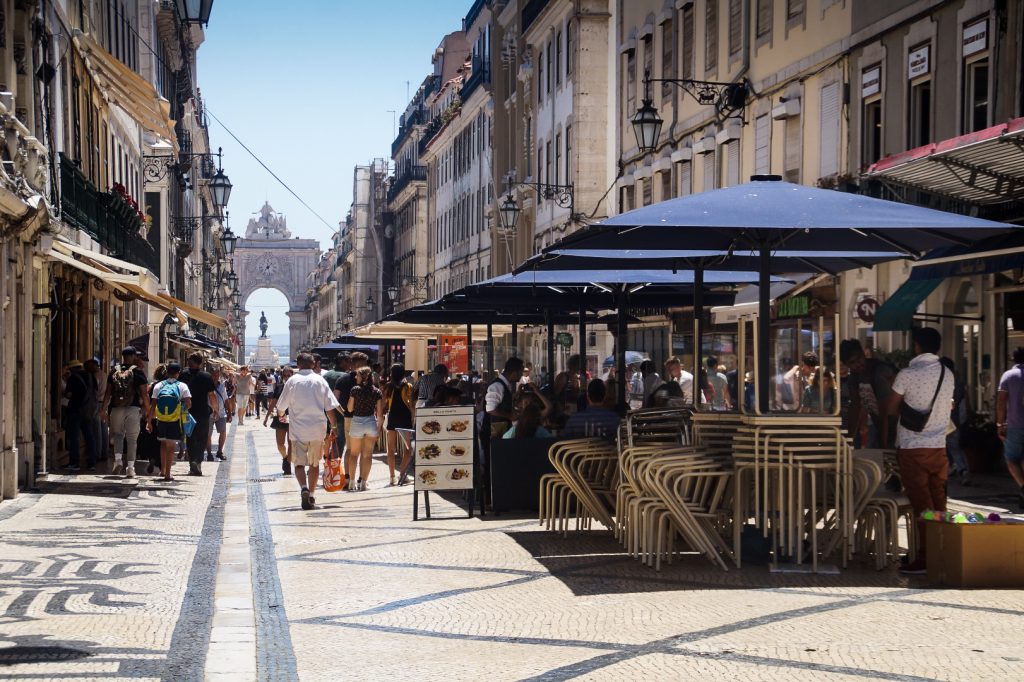


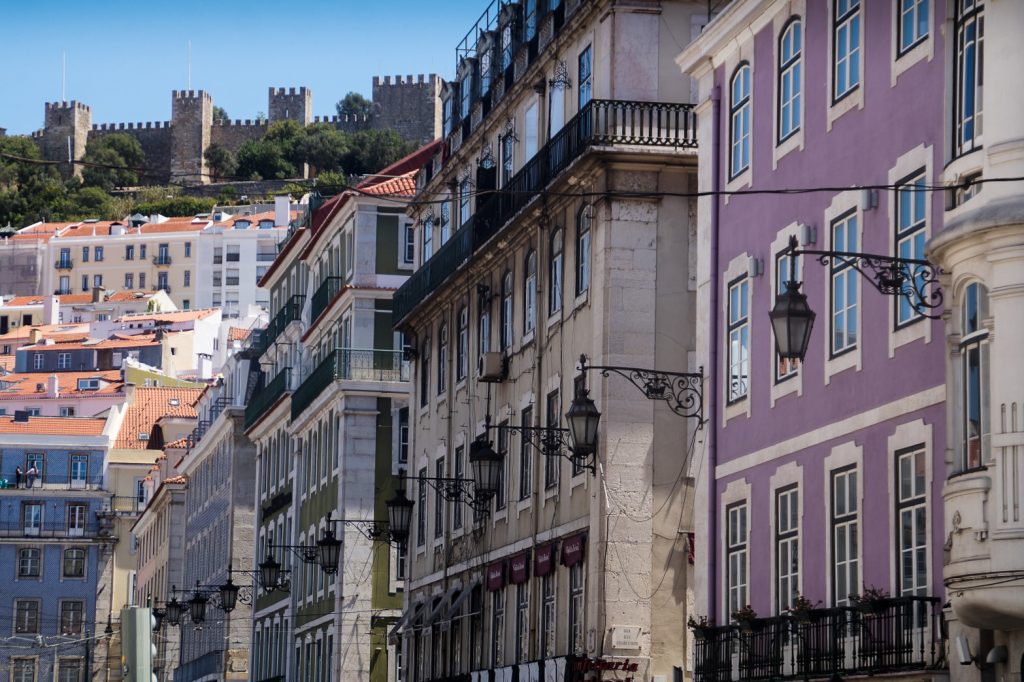
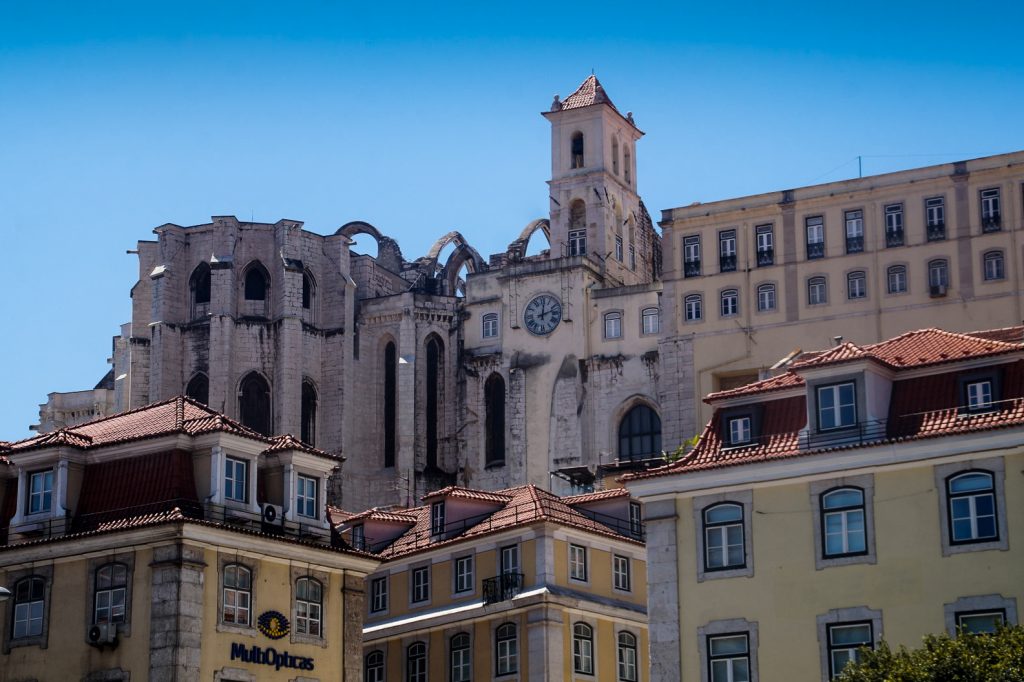

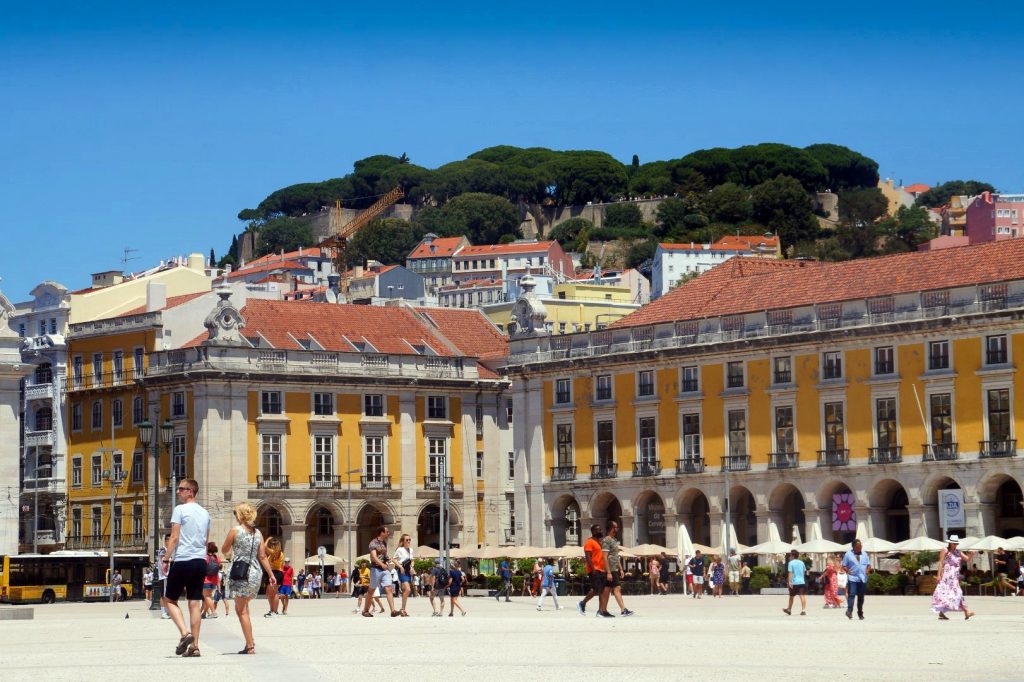
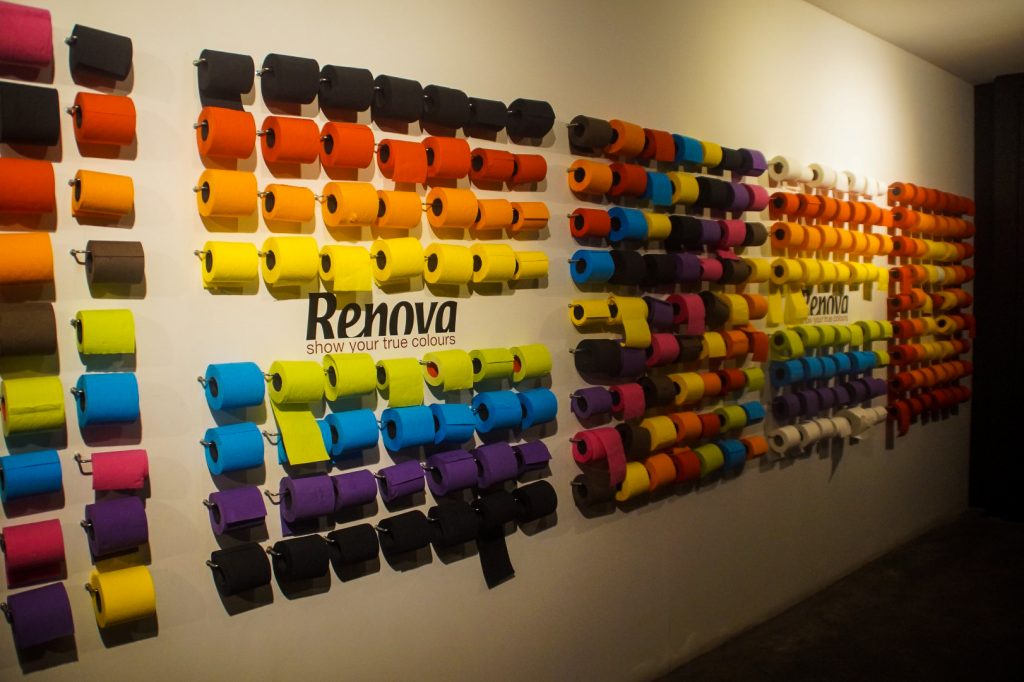
A tram to the Jerónimos Monastery
It was time for me to head out of the city center and to the district of Bélem, which is home to two UNESCO World Heritage Sites, perched on the banks of the river Tagus.
The Jerónimos Monastery stands out a mile with its characteristic Portuguese Late Gothic Manueline style of architecture, and is the perfect setting for a fairytale wedding, one of which had just ended as I stepped inside the impressive doorway.
The monastery was built in the beginning of the 16th century on the order of the newly crowned King Manuel I, who wished for a monument to represent his era. After it was completed, the monastery was donated to the monks of the Order of Saint Jerome who occupied the prominent building until it was secularized and given to a charitable institution in 1833.
The unique architectural style can be described as a combination of Gothic and Renaissance style, with Portuguese religious and national symbols, engraved in the stones that make up the monastery. I spent ages exploring every inch of the complex and trying to take in every detail of this wonder. For every room I entered and every corner I turned, fresh beauty met my eye. It truly is a masterpiece.
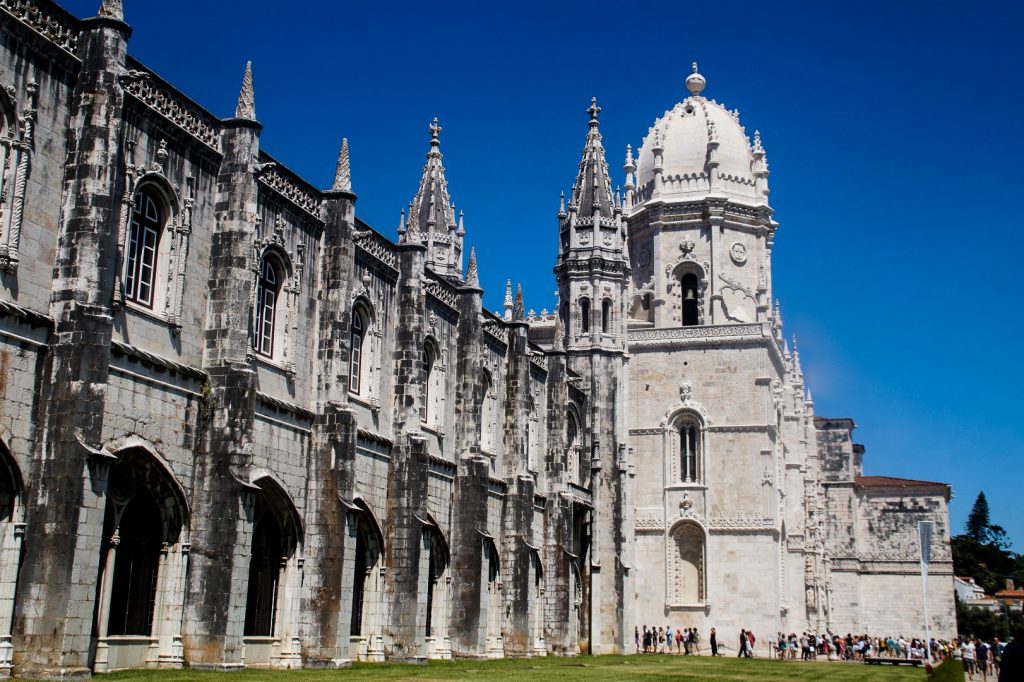





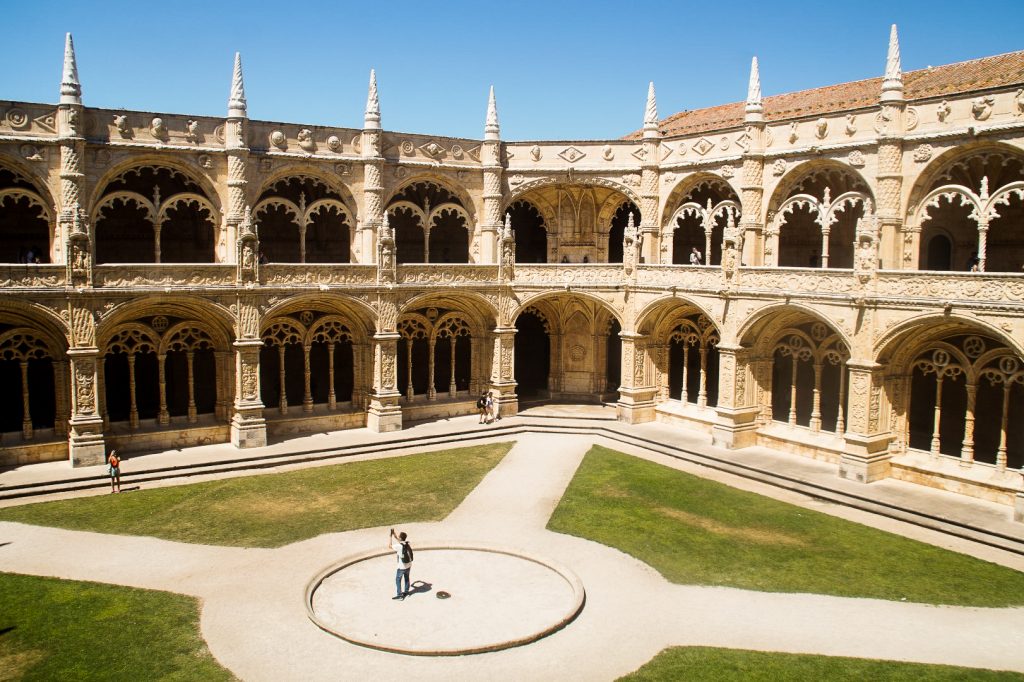
Along the river to Bélem Tower
As I left the monastery behind, I walked down to the banks of the river to finally feel that breeze that I’d been craving all day. Summer in Portugal is unbearably hot and that day was no exception.
The last place that I wanted to visit on my day in Lisbon was the Belém Tower, which is a mere kilometer away from the monastery. I walked along the shore, observing fishermen on the way, and soon arrived at the gorgeous tower.
Belém Tower was built in the Portuguese Manueline style during the 16th century as a fortification that served as a starting and ending point for Portuguese explorers, and as a ceremonial gateway to the city.
After a long day of exploring and getting lost in the maze of Lisbon, I was exhausted when I reached the tower. I took one look at the many people standing atop it and decided I would give it a miss and call it a day. Although a day is only enough to scratch the surface of a city, it gave me a good taste of what Lisbon has to offer, which is a lot more than I ever imagined before going there.


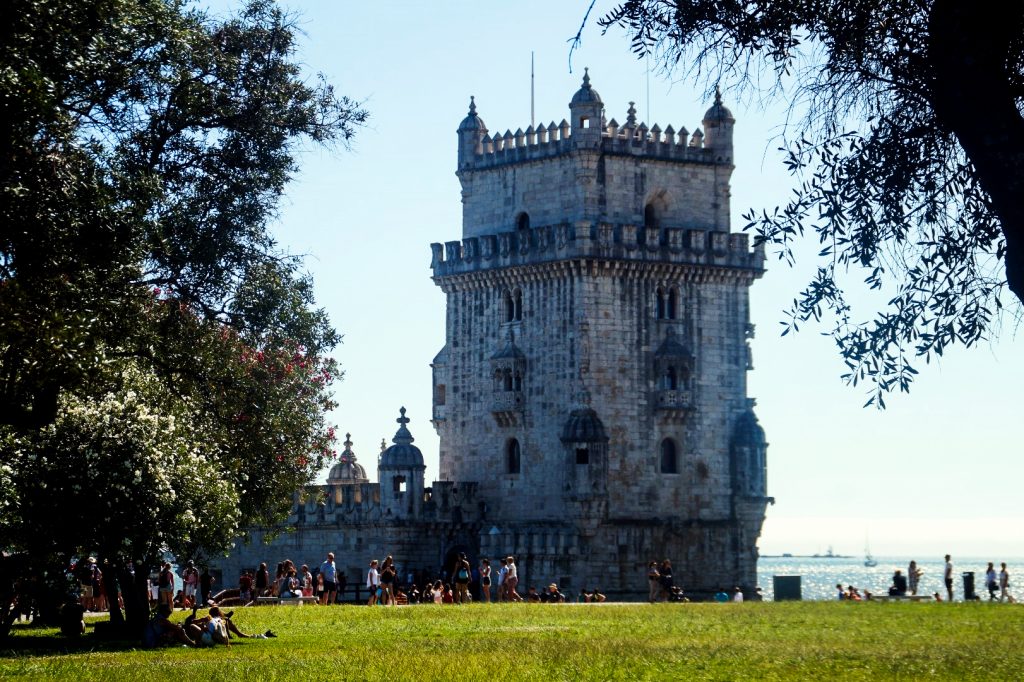
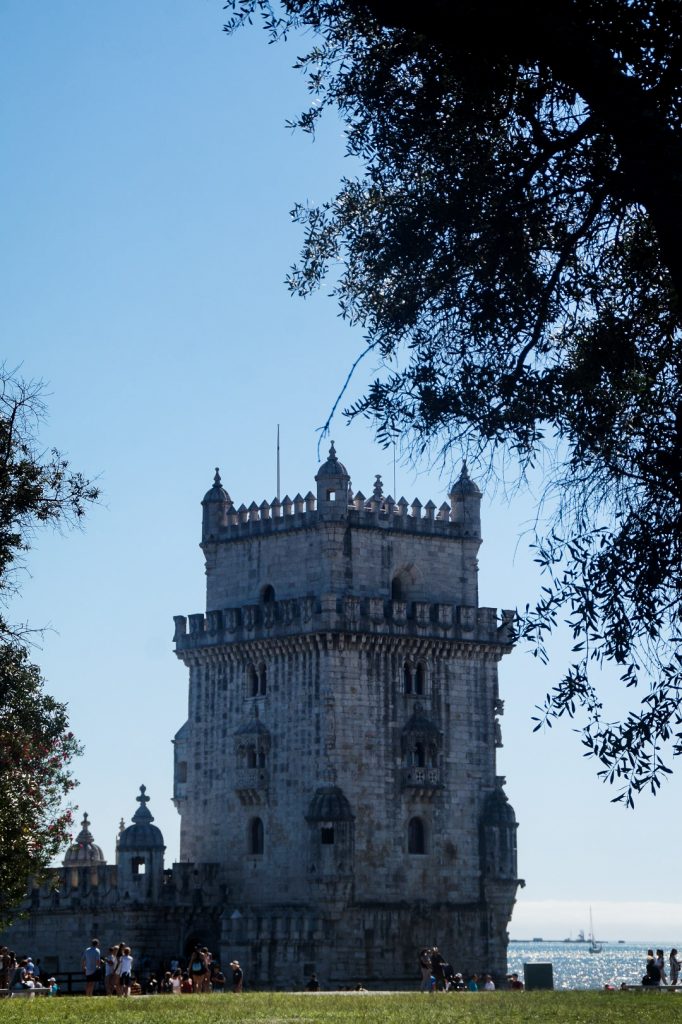
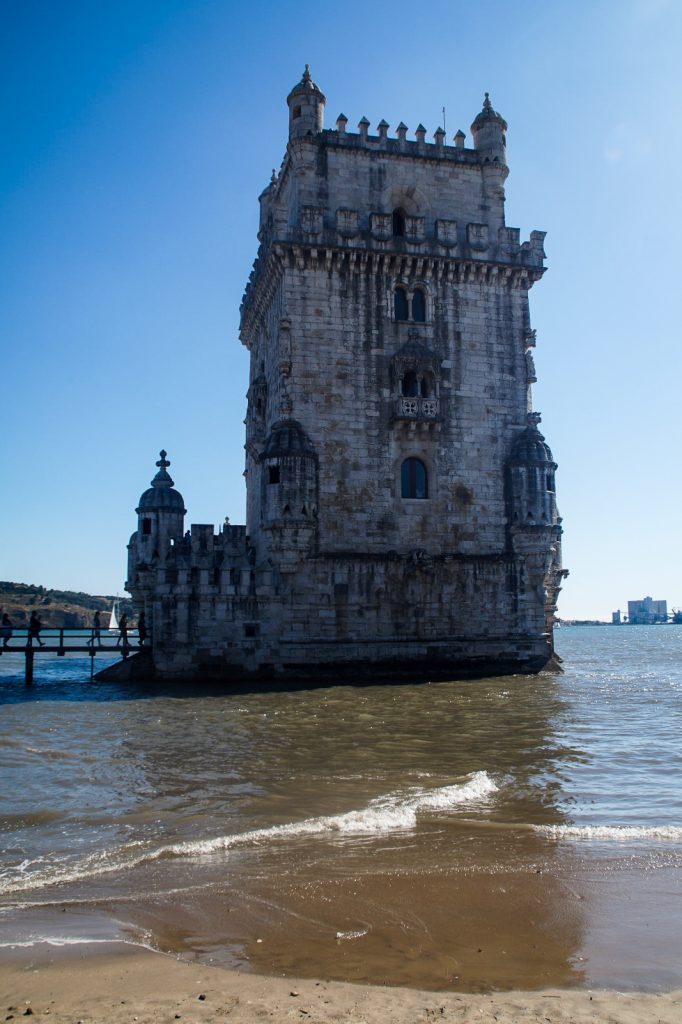
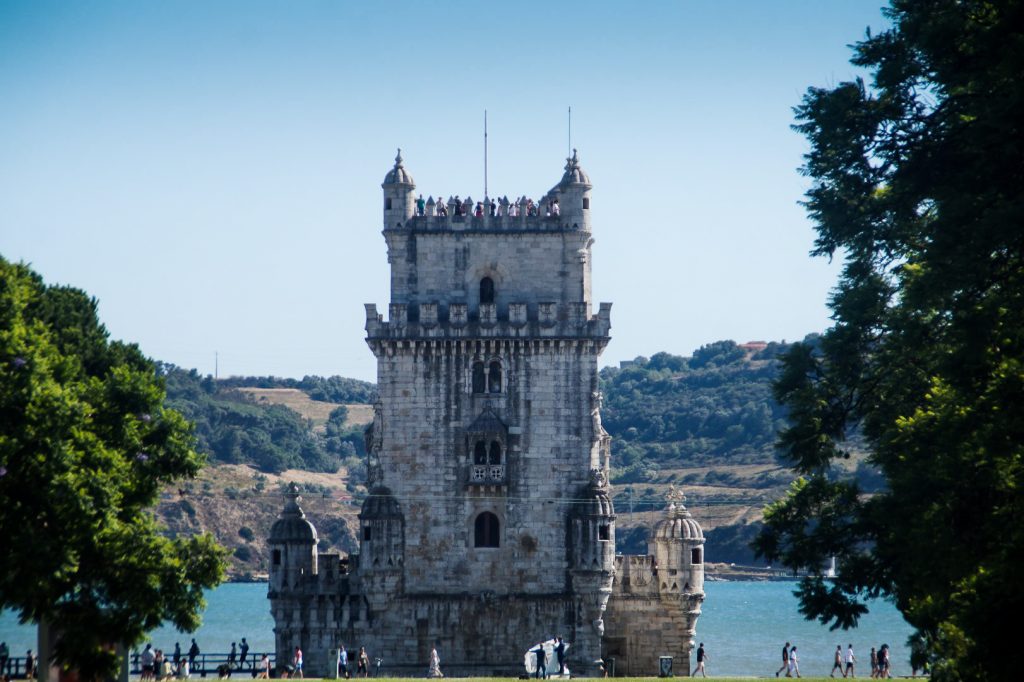
Travel info on Lisbon
The Feira da Ladra flea market is located on Campo de Santa Clara in the Alfama District, and is held every Tuesday and Saturday from dawn to the early afternoon.
Tickets to Castelo de São Gorge cost 10 euros for adults over 25 and 5 euros for anyone under 25.
To get to Bélem, catch tram no. 15 from Praça do Comércio. The ticket price is 3 euros each way.
Visiting the chapel at Jerónimos Monastery is free, but the rest of the complex requires a ticket at 10 euros for adults and 5 euros for students.
Leave a Comment
Pingback: The historic city of Évora and the Chapel of Bones – Northtrotter on 08/10/2020
Pingback: My 19 favourite new destinations of 2019 – Northtrotter on 08/10/2020

2 COMMENTS